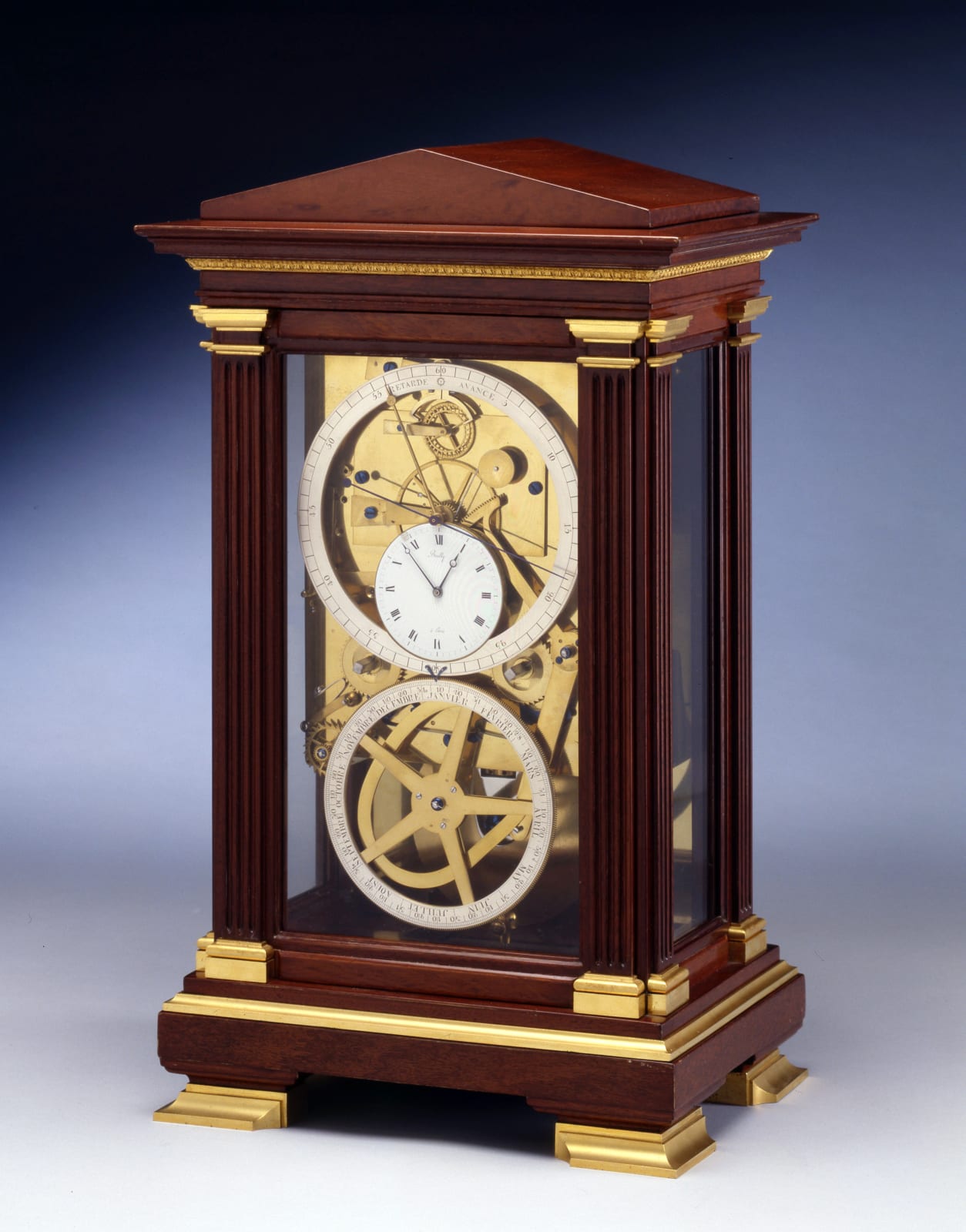Bailly
A superb and very rare Empire bronze mounted mahogany table regulator of month duration, signed on the white enamel dial Bailly a Paris and on the silver beat scale, Bailly Hger de I'Empereur, with escapement signed and dated Lory 1818. The white enamel dial with Roman numerals for the hours and markings for the minutes with blued steel hands for the hours and minutes. Above a silver brass and engraved chapter ring with Roman numerals for the seconds, at the top of the chapter ring another indication for retard and advance for equation of time, indicated by a brass hand with sunburst and pointer. The lower silvered chapter ring for the days and months of the year. In the base of the case a silver plaque to indicate the beat regulation, signed Bailly Hge'r de I'Empereur.
The movement with substantial rectangular brass plates secured with four brass pillars with screws to the front plate and pinned to the backplate, twin going barrels, the deadbeat anchor escapement mounted on the backplate, fine adjustment to the crutch piece and bob, substantial nine rod gridiron compensated pendulum. Striking on the hour and half hour on a single bell with outside striking count wheel. The gilt bronze mounted mahogany architectural case with squared Doric columns and pediment top with glazed sides. With front, sides and top sliding forward to display the movement, suspended from the backboard.
Paris, dated 1818
Height 49.5 cm.
One is really fortunate to find the names of two important clockmakers on one timepiece, with dial and beat regulation plaque signed Bailly (d. after 1818) and escapement signed Lory.
As one of the leading clockmakers during the Empire, Bailly was appointed Clockmaker to the Emperor Napoleon and was one of the main suppliers to the Imperial Garde-Meuble. He was also responsible for the maintenance of clocks at Chateau Compiegne and the Trianons, Versailles. Examples of his work can be seen at Compiegne, Fontainebleau and the Trianons as well as in notable French museums - the Louvre, Musee Marmottan, Musee de la Legion d'Honneur and the Garde-National, Paris. Pierre-Philippe Thomire, Claude Galle and others supplied very beautiful cases for his clocks.
Interestingly the strong architectural case on this particular regulator compares very closely to another supplied to Antide Janvier (1751-1835) for one of his mantle regulators, dated 1819, illustrated in "Antide Janvier, Horloger des Etoiles", p. 222. Germain-Claude Lory Ie Jeune, son of the Parisian clockmaker, Claude Lory became a maitre in 1778. He was working from Rue de Grenelle in 1781 and then Rue de Phelippeau 1789-1815. He is recorded as making a clock for a bell tower 1789 and is renowned for making complex astronomical clocks.
